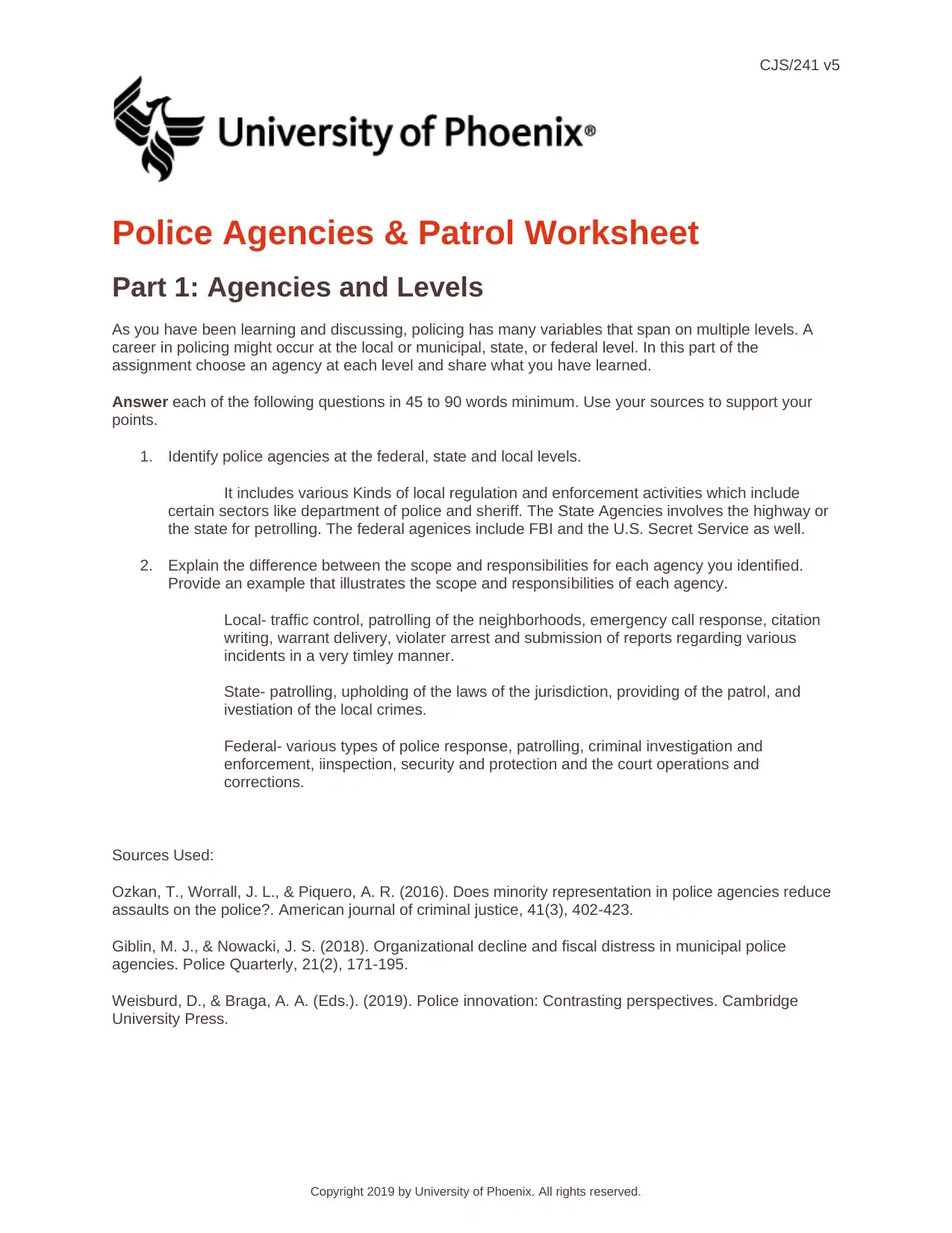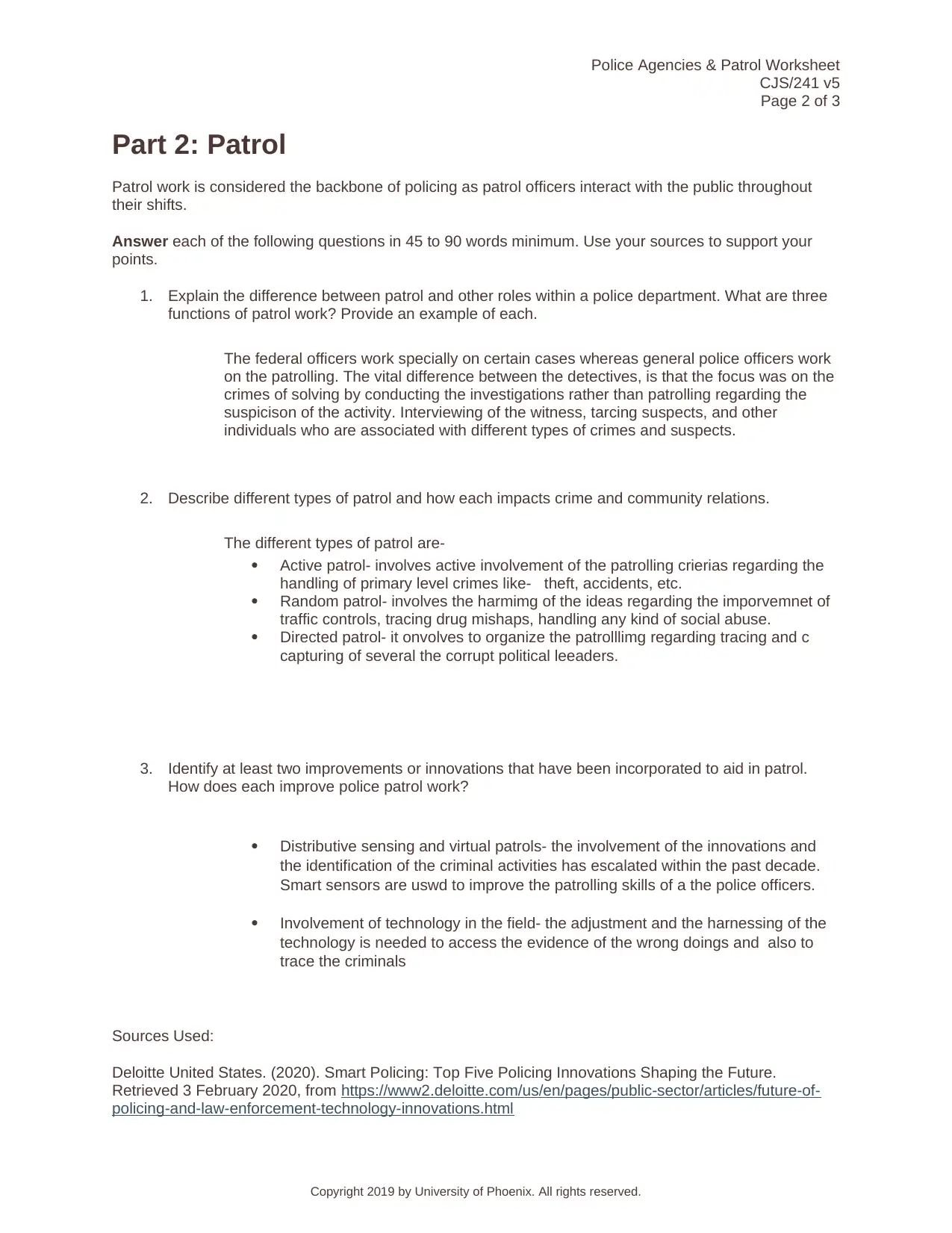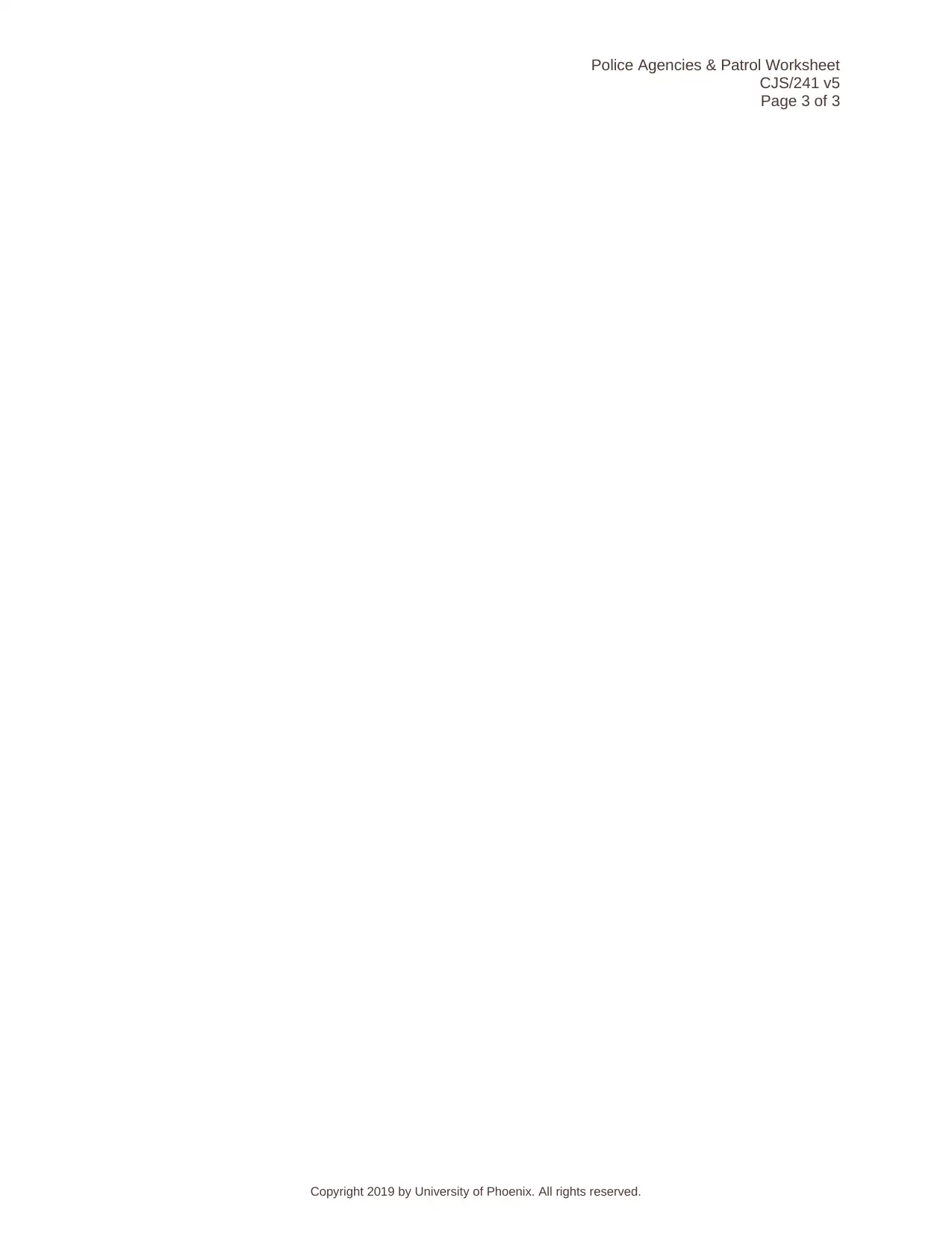CJS/241 v5 Police Agencies & Patrol Worksheet Assignment
VerifiedAdded on 2022/08/17
|3
|754
|19
Homework Assignment
AI Summary
This assignment solution is a comprehensive worksheet exploring police agencies and patrol work. It begins by identifying and differentiating between federal, state, and local police agencies, outlining their scopes and responsibilities with examples. The second part of the worksheet focuses on patrol, differentiating patrol roles from other police department functions, and detailing three functions of patrol work with examples. It also describes various patrol types and their impact on crime and community relations, while also identifying improvements and innovations, such as distributive sensing and virtual patrols, that enhance patrol effectiveness. The solution draws from academic sources to support its points, providing a well-researched overview of policing.
1 out of 3






![[object Object]](/_next/static/media/star-bottom.7253800d.svg)